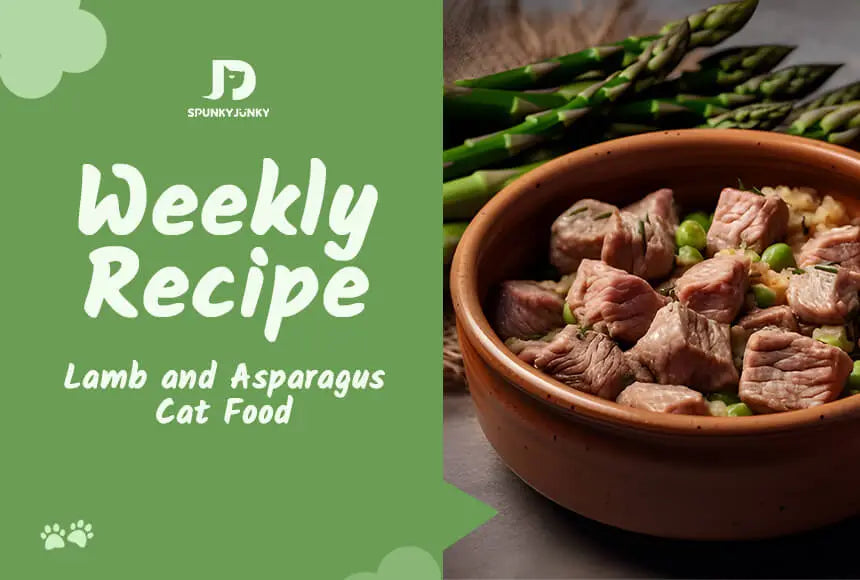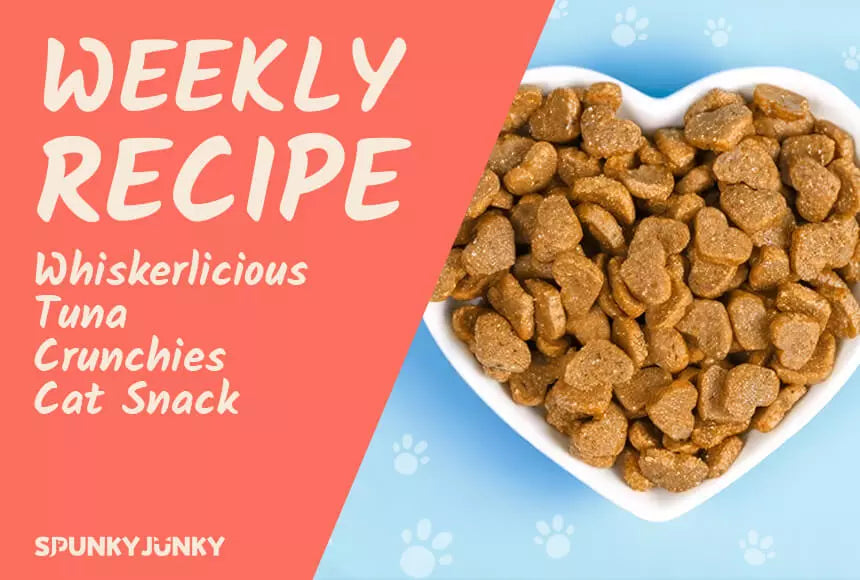We're back with another week of recipes! This week, we have a special treat for our cats: Vet Approved Homemade Cat Food Recipes - Lamb and Asparagus, a tasty homemade meal with a mix that is hard to resist. If your cat has been picky about what it eats lately, this recipe might get it hungry and make meals fun. So, let's get started!
Lamb and Asparagus Ingredients:

Lamb and Asparagus Instructions:

Lamb and Asparagus Allergen Information:
One of the questions we, pet owners, often ask is "Can dogs/cats eat...". I can imagine you'll have the same question with this recipe, like "Can cats eat asparagus?" After all, it's not a regular food for cats.
That's why I always write this part. Knowing the foods that your cat may be allergic to before making homemade cat food is very helpful. If you know your cat is allergic to or sensitive to any ingredients in the recipe, use a different element or leave those ingredients out. Here are some things to think about and other options:
1. Can cats eat asparagus?
Yes, cats can eat asparagus. Eating small amounts of asparagus is safe and good for cats.
When feeding asparagus to your cat, make sure it is cooked and cut into manageable pieces to avoid choking hazards.
If your cat is allergic to asparagus or has trouble digesting it, you can substitute cat-friendly vegetable substitutes. Some safe options include green beans, peas, or spinach.
2. Can cats eat lamb?
Yes, cats can eat lamb as part of their diet. Lamb is a good source of protein and essential nutrients for cats.
If your cat is allergic to lamb, you can substitute it with another lean and boneless meat that your cat tolerates well. Good substitutes might include chicken, turkey, or beef.
3. Can cats eat egg?
Yes, most cats can eat eggs. Eggs are a good source of protein and contain essential amino acids that are good for cats. They can be a healthy and nutritious addition to your cat's diet.
If your cat is allergic to egg whites, you can exclude this ingredient from the recipe. Make sure to provide other sources of protein to meet your cat's dietary needs.
4. Can cats eat oil?
Cats can consume small amounts of oil as part of their diet.
If your cat is allergic to canola oil, it may be best to omit it from the recipe. Oil is mainly used to prevent sticking and to add some moisture to dishes. Instead, you can use a small amount of water or broth to achieve a similar effect.
Lamb and Asparagus Nutrition Facts:
Homemade Cat Food with Lamb and Asparagus

Lamb and Asparagus Tips:

Lamb and Asparagus Storage:
Why do we recommend Vet Approved Homemade Cat Food Recipes?
What makes vet-approved homemade cat food recipes a superior choice? Let's uncover the delightful details!
1. Tailored Nutrition:
With vet-approved homemade cat food recipes, you can ensure your feline companion receives the right balance of protein, fat, and carbohydrates needed for optimal health and well-being.
2. Superior Ingredients:
Homemade cat food recipes that earn the vet's approval prioritize safety and quality. You can select from premium meats, fresh vegetables, and other wholesome ingredients to create a delectable feast for your beloved cat.
3. Allergen Avoidance:
Vet approved formulas are designed to steer clear of common allergens, providing both peace of mind and a satisfying meal that caters to your cat's discerning palate.
By making this vet approved homemade cat food recipes at home, you can make sure your cat gets all the nutrients they need for a healthy meal. Tender, juicy lamb gives cats high-quality protein to build and keep their muscles in good shape. Asparagus is a food full of vitamins and minerals that helps keep your cat's digestive system healthy.
You'll have fun making this homemade meal for your beloved cat and seeing the joy on its face as it eats the delicious feast you made just for it.






